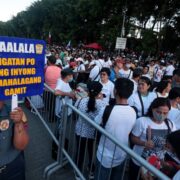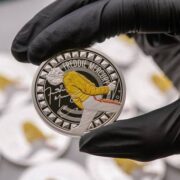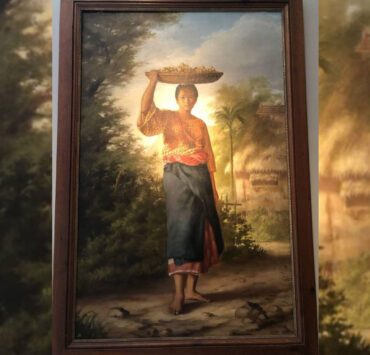Fake news: Rizal’s resurrection

Fake news and disinformation are often discussed in relation to social media, where they spread faster than the truth. It is a tragedy that social media apps were originally designed to connect people and foster community, yet the misuse of these apps has produced the opposite: confusion, discord, and enmity among us. Fake news is not new, and disinformation is as old as history. The medium may be different, but the means to counter it remain the same: validating information through critical thinking.
A curious bit of historical fake news from the National Archives of the Philippines stands out in the decades that I have spent on primary source research in archives, libraries, and museums, both in the Philippines and abroad. On March 29, 1897, the civil governor of Manila transmitted a 15-page report to the governor general on incidents that had occurred within his jurisdiction. It included, among other things, rumors spreading in Pandacan, San Juan del Monte, San Felipe Nery, and other areas that Jose Rizal, executed in Bagumbayan on Dec. 29, 1896, was alive! I translated the section on “Rizal’s Resurrection” from the original Spanish as follows:
“I have the honor of submitting to Your Excellency the attached summary of events that have occurred in the towns of this province, according to reports received from the respective local authorities and verbal confidences shared with me in recent days.
“Among the indigenous populations of some suburbs of this capital, as well as in the towns of Pandacan, San Juan del Monte, San Felipe Nery, and others, the fabricated rumor continues to circulate that the prisoner Jose Rizal, sentenced to death and executed on the morning of December 29th (sic) last in the field of Bagumbayan, had not died, as reported in the newspapers, but that on the contrary he is alive and well. The indigenous people explain this miracle in the following manner:
“After the execution of the prisoner, as his body was being collected and placed in the cart that took it to the cemetery, a faint, pinkish cloud settled on the cart, surrounding it, and remained so all the way to the cemetery. At the cemetery gate, the cart stopped, and the servants removed the bier on which they believed the corpse lay; it was not there, and in its place appeared a beautiful white rooster, that, in the presence of the authorities and to everyone’s great surprise, took flight, surrounded by the faint cloud, heading towards the province of Cavite, where it joined the soul of Father [Jose] Burgos, who since 1872 has watched over said province, instilling courage and daring in its [rebellious] inhabitants.
“Another absurdity spread in the same vein was that Rizal’s corpse had been taken from the grave where it was buried in Paco Cemetery and moved to another site in the same cemetery.
“Since this version could have originated from the violation of his tomb, I have discreetly carried out the necessary procedures, leading me to believe that the tomb has not been desecrated, being today completely covered by grass; having observed that on the wall that was immediately adjacent to the head of the tomb, a cross has been made on the stone with a sharp instrument, without it being possible to know the person or persons who have executed it, having ordered that, with all secrecy and care, said cross be erased, in such a way that it leaves no trace, nor can it be known that the stone has been touched.”
We are told that one of Rizal’s sisters located the unmarked grave of her brother in Paco Cemetery, and bribed a “sepulturero” or grave digger to install a small white plaque on the spot with the initials “R.P.J.”—the hero’s initials backward. In 1898, Rizal’s remains were unearthed and transferred to the family home in Binondo before they were reinterred under the Rizal monument in 1912. The document concludes as follows:
“Such lies, Your Excellency, prove once again the great influence that the name of the accused Rizal exerted over the indigenous people, whom the masses, influenced by superstition and idolatry, have considered an extraordinary being with supernatural faculties; for this reason, it is necessary to ensure by all means that such lies, spread surely by those who have a keen interest in fomenting rebellion, do not spread, taking advantage of the superstitious nature of the Indian.
“The undersigned believes that the Rizal family, which includes among its members some with rebellious ideas, will sustain concern and agitation among the masses, either to avenge what they call grievances, or to continue the history of anti-Spanish and anti-Catholic propaganda, that was always the motto and banner of Jose Rizal Mercado, whom he can consider the most pernicious man in Philippine history, and that in this sense the residence of said family in the Archipelago is detrimental.”
This is raw intelligence information that needs validation, but you must admit it is an engaging read. I presume there are others like it waiting to be found.
—————-
Comments are welcome at ambeth.ocampo@inquirer.net
Ambeth is a Public Historian whose research covers 19th century Philippines: its art, culture, and the people who figure in the birth of the nation. Professor and former Chair, Department of History, Ateneo de Manila University, he writes a widely-read editorial page column for the Philippine Daily Inquirer, and has published over 30 books—the most recent being: Martial Law: Looking Back 15 (Anvil, 2021) and Yaman: History and Heritage in Philippine Money (Bangko Sentral ng Pilipinas, 2021).


















